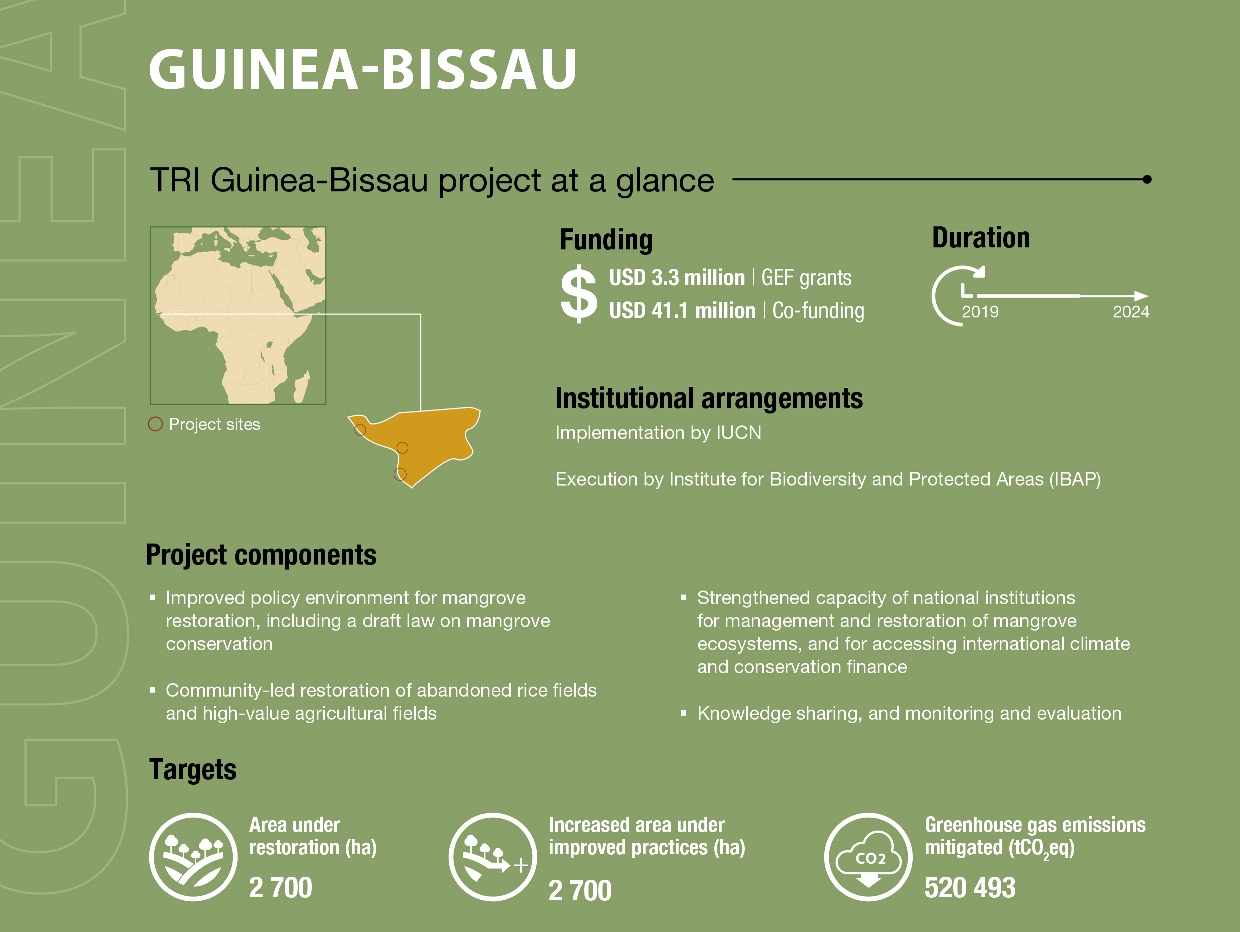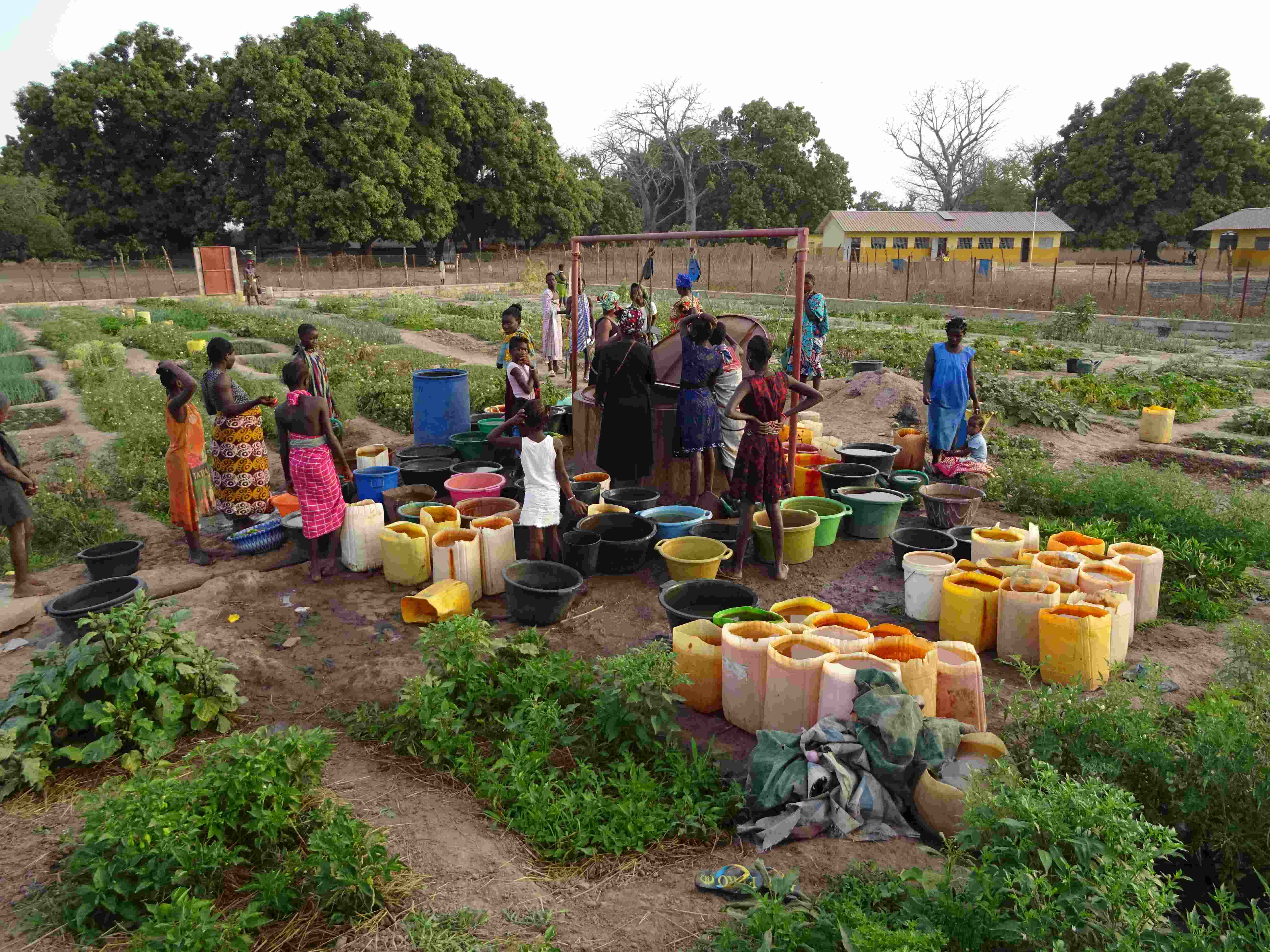TRI’s project in Guinea-Bissau is working to restore and protect mangrove ecosystems – among the most productive and threatened ecosystems in the world. Found in the intertidal zones of coastlines, mangrove ecosystems are dominated by mangrove trees or shrubs, which are well-adapted to living in such salty environments. Specialized adaptations include complex root systems that extend above and below the water line and help to anchor the mangrove plant in place. In doing so, these root systems help prevent coastal erosion while providing habitat, nurseries and feeding grounds for numerous fish and other organisms. In addition, mangrove ecosystems provide coastal protection from storms, as well as carbon storage, food, timber and livelihoods.
In Guinea-Bissau, mangroves face a number of threats – principally conversion for agriculture and coastal development. As a result of these and other drivers, the total area covered by mangroves has declined by 32% since 1940.
One type of agricultural practice particular to Guinea-Bissau is the cultivation of rice in coastal areas of cleared mangrove forest, using earthen dikes to protect the rice fields from seawater ingress. This labour-intensive farming requires constant maintenance to safeguard and reinforce dikes. Moreover, if these agricultural fields are abandoned due to labour shortages, changes in rainfall patterns, or other reasons, and dikes are not simultaneously removed, the tide may not penetrate sufficiently into the formerly cultivated areas to encourage the natural restoration of mangroves, and the soil becomes prohibitively salty and acidic. In this situation, both farmers and the environment lose out.
TRI’s project in Guinea-Bissau aims to reverse this trend by supporting communities through increasing the productivity of existing agricultural fields and restoring abandoned fields. To this end, the project is working with communities to rehabilitate the rice fields that the communities themselves consider most essential to their food security, by providing them with the means to reinforce dikes and improving hydraulic management of cultivated areas. In return, the villages commit to flatten the upper part of the dikes of abandoned rice fields to allow the sea to enter again and mangrove seedlings (called propagules) to grow again, and thus promote a natural restoration of the mangroves.



